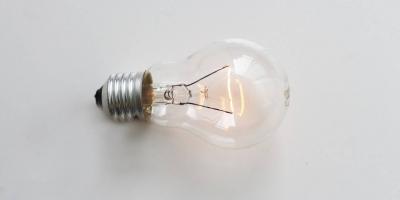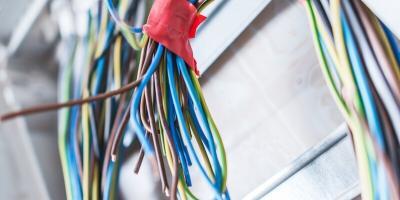When do you need level 2 electrician ?
When it comes to electrical projects and repairs, level 2 electricians are the professionals who can be called upon for their expertise.
Level 2 electricians specialize in high-voltage installations or repairs on-site and have the experience and knowledge required to do the job safely and efficiently.
From connecting overhead power lines to buildings, repairing underground cables, replacing substations/transformers, or installing solar panels – level 2 electricians provide a wide range of services that your typical level 1 electrician may not handle.
In this blog post, we’ll discuss when you need a level 2 electrician for your project so that you can make an informed decision based on the complexity of your project.
Read more to find out when you need a level 2 electrician.
What is a level 2 electrician ?
A level 2 electrician is a qualified tradesman with the skills and training to install, maintain and repair electrical systems. The main difference between a level 1 and level 2 electrician is that a level 2 electrician can work on high-voltage systems, such as those used in industrial and commercial settings.
To become a level 2 electrician, an individual must complete an accredited training program and pass a rigorous licensing exam.
Once licensed, a level 2 electrician can install new electrical systems or troubleshoot and repair existing ones. In addition, level 2 electricians are often called upon to respond to emergencies, such as power outages or downed power lines.
As such, they must be able to think quickly and work calmly under pressure. With their high level of skills and training, level 2 electricians play an essential role in ensuring the safety and efficiency of our electrical infrastructure.
Overview of level 2 electrician services
When it comes to electrical work, it’s essential to know that not all electricians are created equal. In Australia, there are different levels of licenses that dictate the level of work an electrician is qualified to perform.
A level 2 electrician can perform various tasks, including connecting and disconnecting service lines, installing and maintaining switchgear, and identifying and rectifying faults.
Level 2 electricians also have the training and experience necessary to work safely with high-voltage equipment. As a result, they are often called upon to work in commercial and industrial settings.
If you require any type of electrical work to be carried out, it’s essential to make sure that you hire a licensed level 2 electrician. Not only will this ensure that the job is done right, but it will also help to protect you from any potential hazards.
When Do You Need a Level 2 Electrician ?
Level 2 electricians are trained and certified to work on high-voltage power lines that deliver electricity to homes and businesses. Level 2 electricians must complete a four-year apprenticeship program and pass a written exam and a safety test.
They must also have insurance and bonding to protect themselves and their customers from potential liabilities. Level 2 electricians typically work for utilities or electrical contractors. Some may also be self-employed and typically charge by the hour, with rates varying depending on the location, the time of day, and the type of work being performed.
Some level 2 electricians may also offer discounts for seniors or customers who prepay for their services.
So let’s look at when we need level 2 electricians
1. Installing or maintaining high-voltage power lines and cabling
Installing or maintaining high-voltage power lines and cabling is challenging and potentially dangerous. Despite the dangers, it is an essential task that must be performed in order to keep the electricity flowing to homes and businesses.
The first step in any installation or maintenance project is to ensure that the area is clear of obstacles. Once the work area is clear, workers must put on special protective clothing and equipment. This gear helps to insulate them from the high voltages they will be working with.
Next, workers must carefully connect or disconnect the power lines and cabling. This process must be done slowly and deliberately to avoid sparks or other accidents.
Finally, workers must test the lines and cabling to ensure they are safe before leaving the area. Installing or maintaining high-voltage power lines and cabling may be dangerous, but it is important.
2. Connecting overhead power lines to buildings or repairing existing ones
Connecting overhead power lines to facilities or repairing existing ones can be daunting. Still, ensuring a structure has a reliable power supply is necessary.
The first step is identifying the main electrical line that runs to the building. Once this has been located, the next step is to connect the cable to the building’s electrical system. It can be done by either running the line directly into the building or connecting it to an existing power line.
Finally, it is important to test the connection to ensure it works properly. By following these steps, you can ensure that your building has a safe and reliable power supply.
3. Repairing underground cables and replacing substations/transformers as needed
One of the most important aspects of maintaining a reliable and efficient electrical grid is repairing underground cables and replacing substations/transformers as needed. While above-ground power lines are easier and cheaper to maintain, repairing underground cables and replacing substations/transformers as required is essential to keeping the power flowing.
Below-ground cables are less likely to be damaged by severe weather or other hazards, but they are more difficult and expensive to repair. Repairing underground cables and replacing substations/transformers as needed is the only way to get the power flowing again when underground cables fail.
In addition, repairing underground cables and replacing substations/transformers as needed helps to ensure that the electrical grid can meet future demand. As our population grows and our need for electricity increases, repairing underground cables and replacing substations/transformers as needed will become even more important.
4. Troubleshooting faults in the network and providing solutions
In any kind of network, whether a small office LAN or a large corporate WAN, there will inevitably be times when things go wrong. When this happens, it’s important to have someone who can quickly identify the problem and provide an effective solution.
It is where troubleshooting comes in. Troubleshooting is the process of diagnosing and resolving problems with a computer network. It can be difficult and time-consuming, but it can be relatively straightforward with the right skills and knowledge.
The first step is to identify the problem. This can be done by looking at the symptoms and identifying the root cause. Once the problem has been identified, the next step is to find a solution. It may involve changing the network configuration, installing new software or hardware, or simply restarting the system.
Troubleshooting faults in the network can be challenging, but with the right skills and knowledge, it can be relatively straightforward. By quickly identifying and resolving problems, you can help to keep the network running smoothly.
5. On-call emergency work, including repairs to downed lines
On-call emergency work can be very demanding, especially repairs to downed power lines. While most of us take electricity for granted, it’s a dangerous and essential service that needs to be performed by trained professionals.
When severe weather strikes, on-call emergency workers are responsible for restoring power as quickly and safely as possible. This can often mean working long hours in difficult conditions, and it’s important to be prepared for the physical and mental challenges that this type of work can bring.
In addition to being physically fit, on-call emergency workers need to have a good knowledge of electrical safety procedures. They must also think clearly and make quick decisions in potentially dangerous situations. On-call emergency work can be challenging and stressful, but it’s also an essential service that helps keep our communities safe.
6. Installing solar panels, battery storage systems & other renewable energy sources
Installing solar panels is a great way to reduce your reliance on fossil fuels and save money on your energy bills. Solar panels capture the sun’s energy and convert it into electricity, which can then be used to power your home or business.
Installing solar panels is a relatively simple, and many companies offer installation services. Battery storage systems are another way to store energy captured by solar panels. These systems can be used to power your home or business in the event of a power outage, and they can also help you to meet your energy needs during peak demand periods.
Many different types of battery storage systems are available, and each has its own benefits and drawbacks. Other renewable energy sources that can generate electricity include wind turbines and hydroelectric dams. These sources have the potential to provide large amounts of clean, renewable energy, but they require significant upfront investment and ongoing maintenance costs.
Conclusion
No matter what kind of electrical work you need, hiring the right electrician for the job is important. Different types of electricians will have different levels of expertise and experience, so it’s important to take the time to find someone who is qualified and knowledgeable.
When looking for an electrician, ensure they hold a valid license and are up-to-date on all relevant safety regulations. It will help ensure that your electrical system is in safe working order. Level 2 electricians are highly skilled professionals who can handle a wide range of tasks, from troubleshooting faults in the network to installing solar panels and battery storage systems.
If you need any complex or emergency electrical work done, level 2 electricians can provide the expertise and experience to complete the job. By making sure you hire the right level 2 electrician for your project, you can rest assured that your electrical system is in safe working order and can meet all your power needs.
Call us at (02) 9199 7480 for an appointment or inquire with us via our contact page.










